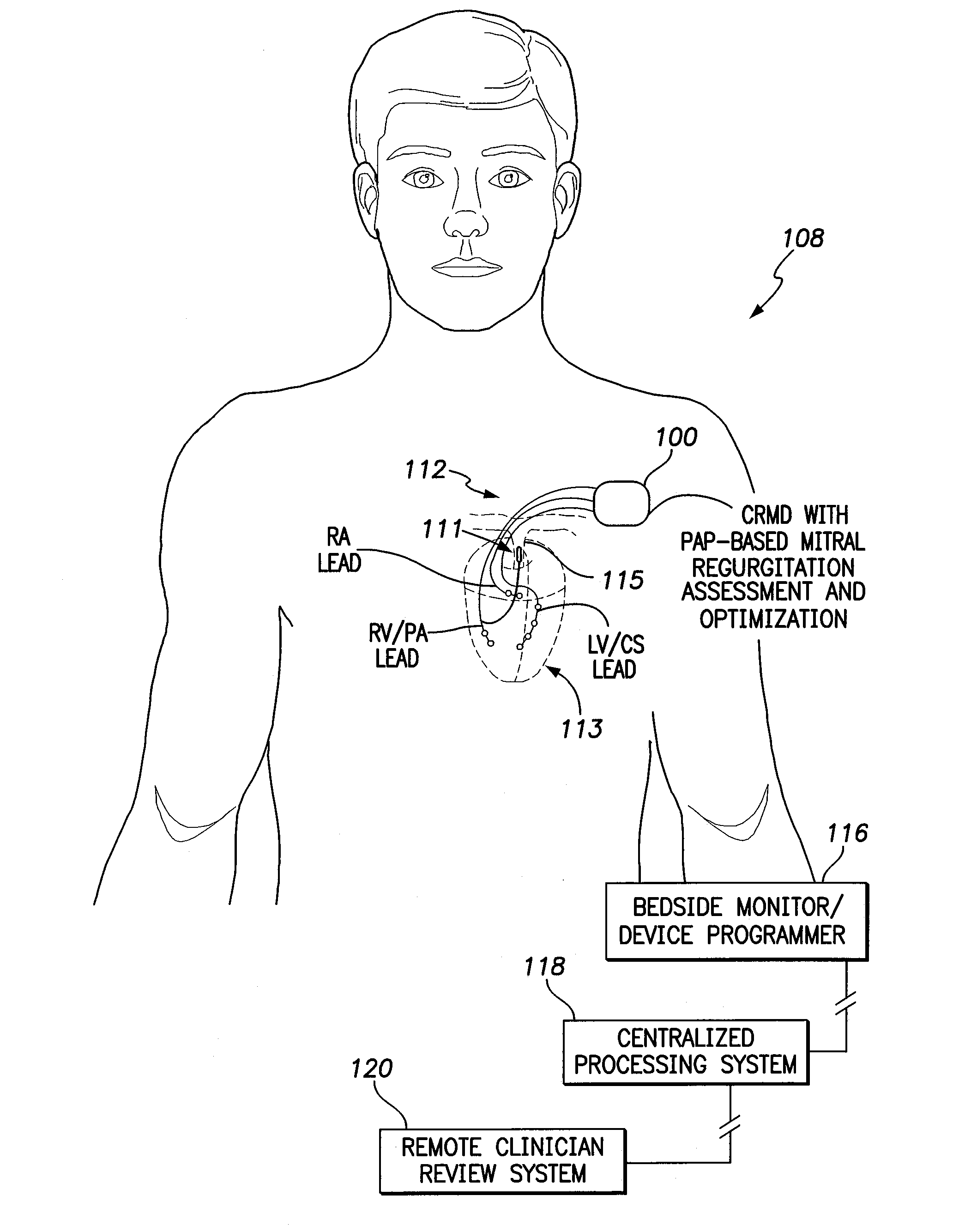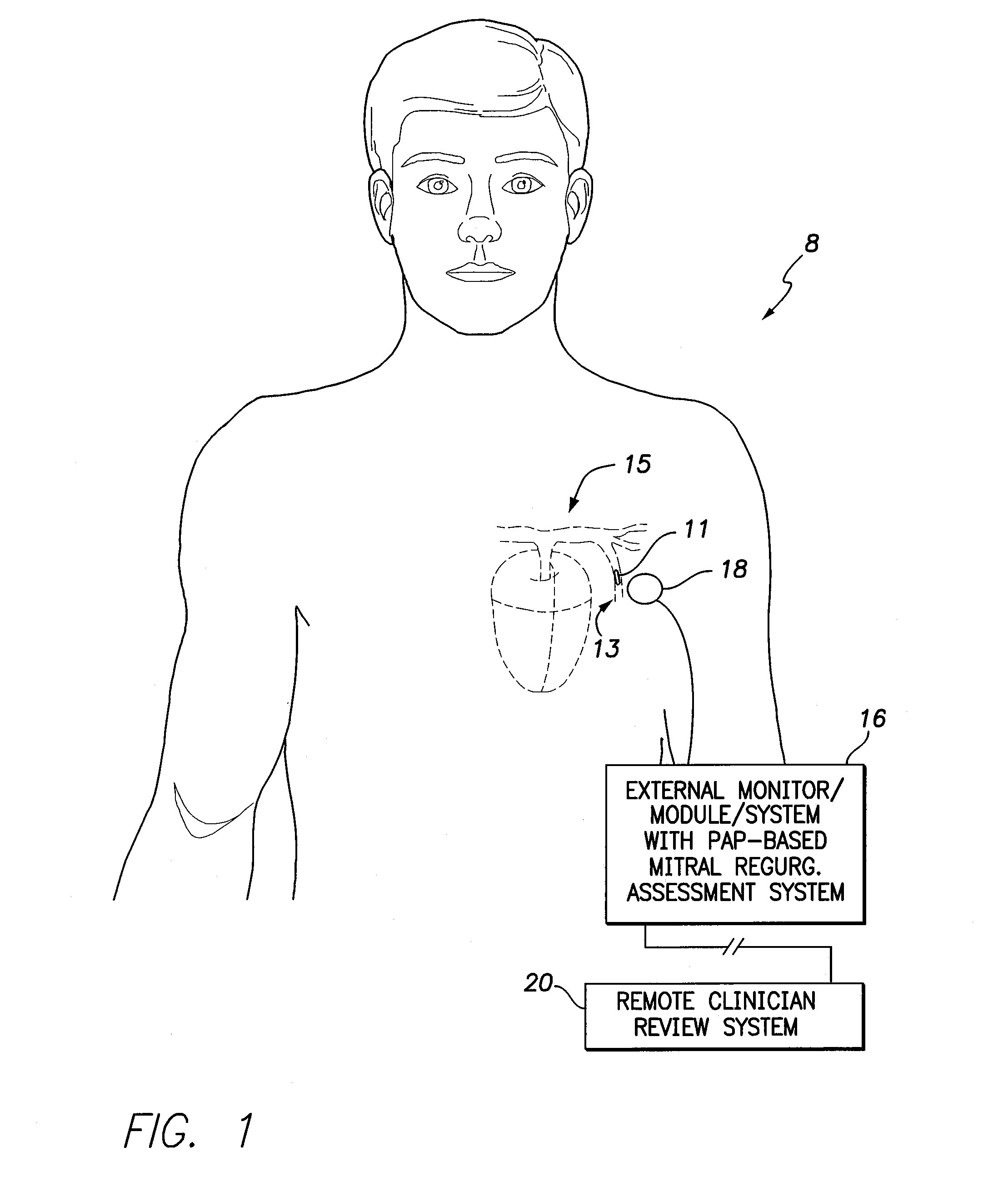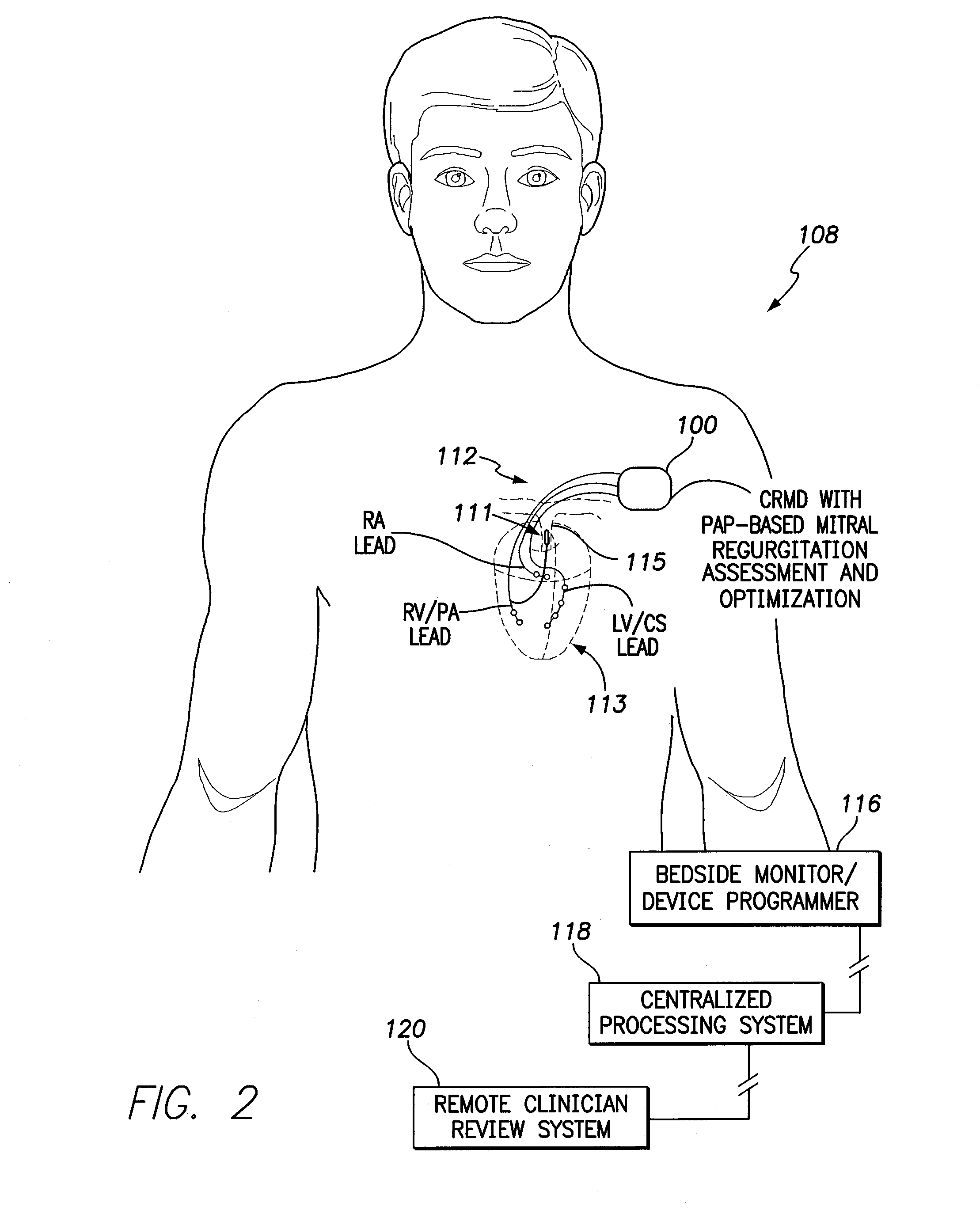Systems and methods for using pulmonary artery pressure from an implantable sensor to detect mitral regurgitation and optimize pacing delays
a technology of pulmonary artery pressure and implantable sensors, which is applied in the field of implantable medical devices, can solve the problems of impaired arterial circulation, insufficient ejection or filling of blood in the ventricle, and loss of propulsive power of the heart, and achieve the effect of simple and inexpensive pap monitors
- Summary
- Abstract
- Description
- Claims
- Application Information
AI Technical Summary
Benefits of technology
Problems solved by technology
Method used
Image
Examples
Embodiment Construction
[0031]The following description includes the best mode presently contemplated for practicing the invention. This description is not to be taken in a limiting sense but is made merely to describe general principles of the invention. The scope of the invention should be ascertained with reference to the issued claims. In the description of the invention that follows, like numerals or reference designators will be used to refer to like parts or elements throughout.
Overview of PAP Monitoring Systems
[0032]FIG. 1 illustrates a first exemplary PAP monitoring system 8 equipped with a PAP sensor 11 implanted within one of the branches 13 of the pulmonary artery 15 for use with an external monitor, module or system 16. The external system receives signals from the PAP sensor for analysis to detect and track MR within the patient and to provide PAP-based diagnostic data such as PAP waveforms. To power the sensor and to retrieve data therefrom, the patient or caregiver places a wand 18 over the...
PUM
 Login to View More
Login to View More Abstract
Description
Claims
Application Information
 Login to View More
Login to View More - R&D
- Intellectual Property
- Life Sciences
- Materials
- Tech Scout
- Unparalleled Data Quality
- Higher Quality Content
- 60% Fewer Hallucinations
Browse by: Latest US Patents, China's latest patents, Technical Efficacy Thesaurus, Application Domain, Technology Topic, Popular Technical Reports.
© 2025 PatSnap. All rights reserved.Legal|Privacy policy|Modern Slavery Act Transparency Statement|Sitemap|About US| Contact US: help@patsnap.com



